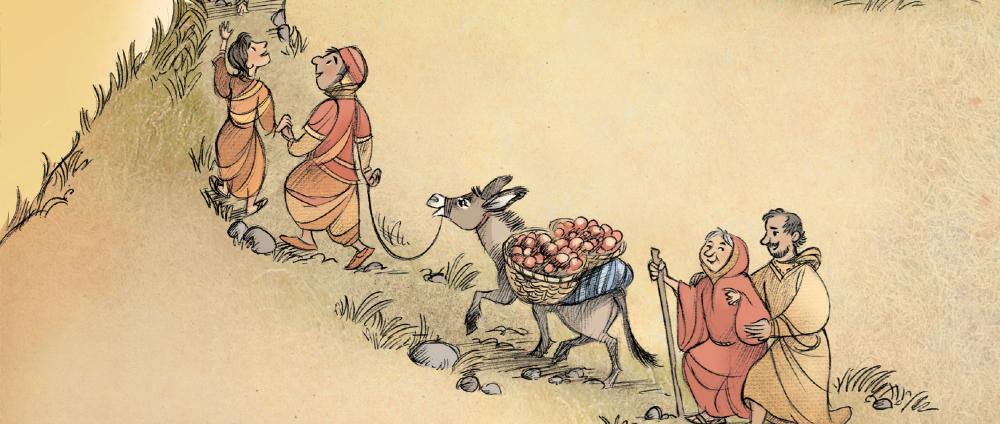
Our Savior
- Understand why Christ's death was necessary.
- Marvel at the willingness with which Jesus endured death on a cross, not as victim but as victor.
- Trust that Jesus is our Savior.
Leader Reflection
If you read through the entire account of Jesus' passion in the gospel of John, you can sense an important difference in how Jesus is depicted here than in the other gospels. In the first three gospels, Jesus tends to be depicted as the victim of an unjust system, helplessly nailed to a cross. In John's gospel Jesus seems to be strangely in control of things.
If there's one word that characterizes Jesus here more than any other, it's King. Already in chapter 19 Pilate quizzes Jesus about his kingship, asking him, "Are you the king of the Jews?" Then Jesus mockingly receives a crown of thorns, a purple robe, and the greeting "Hail, King of the Jews!" The main charge that the Jews bring is that Jesus "claims to be King" (v. 12). This kingliness is a signal that Jesus is in control of the situation and that his death is voluntary.
For John, what seemed to be the final humiliation of the cross is actually the time and place of Christ's victory (12:27-28).
Death by crucifixion came through asphyxiation. The body hung by the arms in a cramped position on the cross. In order to breathe, the condemned person had to push down with both feet and hold the head up. When soldiers wanted to hurry someone's death, they would break the person's legs so that he couldn't push up with his feet, and so would quickly die (v. 30). For all that, John pictures Jesus' death as dignified and kingly---he submitted to it voluntarily.
Q&A 28 further probes the mystery of Christ's death on the cross as it's expressed in the creed: "he was crucified, died, and was buried; he descended to hell." Notice how the answer also emphasizes the voluntary nature of Christ's suffering---"Jesus took on himself the curse of sin." He is the Savior not because he's the victim of some ancient lynching, but because in the eternal plan of God he obediently took our sin and death upon himself.
Understandably, the most controversial phrase of the creed is, "he descended to hell." What does this actually mean? Over the years the church has taught that Jesus descended to hell to preach to lost souls or to release Old Testament saints. John Calvin denied that this phrase meant that Jesus went to a place called hell. Instead he said this phrase teaches that Jesus felt the full weight of God's divine wrath against sin as he experienced the horrors of eternal death. If the essence of hell is deep and eternal separation from God, that's what Jesus expressed in his cry, "My God, my God, why have you forsaken me?"
However we interpret it, Jesus' descent was all the way from the throne of heaven to the depths of human damnation. And he did it all for us. He is our King, our mighty Savior. But the story does not end here. Our Savior King rose from the dead and ascended again to that heavenly throne, now taking with him all those who have been baptized into his death and resurrection.
Notice the three “words” Jesus speaks from the cross in John 19. How do they differ from his “words” spoken in the other gospels?
What do you think Pilate is thinking and feeling by the time he blurts out in verse 22 “What I have written, I have written.”
How do you imagine Jesus speaking those last words, “It is finished”?
One challenge in teaching this lesson to your group at this age is that they may have some difficulty in understanding the spiritual nature of Jesus’ suffering in addition to its physical torments. An example of spiritual or emotional suffering from your own experience may help them better grasp Jesus’ suffering.
Before this session, purchase some masonry nails to use at the end of this session. Place them in the center of the table or your meeting place before the group arrives.
Steps
Welcome the young teens as they arrive. When you are ready, begin by reading or reciting together the Memory Challenge for this week, Isaiah 53:4-5, which describes the suffering servant.
Then draw or display the story symbol from last week’s story—the gavel and the crown of thorns, and ask for a few volunteers to recap last week’s session:

Get Unlimited Access!
Sign up for DWELL Digital to unlock all online leader resources, printable pages and session plans.
Call 800-333-8300 or Request Access
Already a subscriber? Log In
Learn About DWELL
DWELL helps kids find their place in God's Big Story. Learn more about this popular and trusted children’s ministry curriculum.
